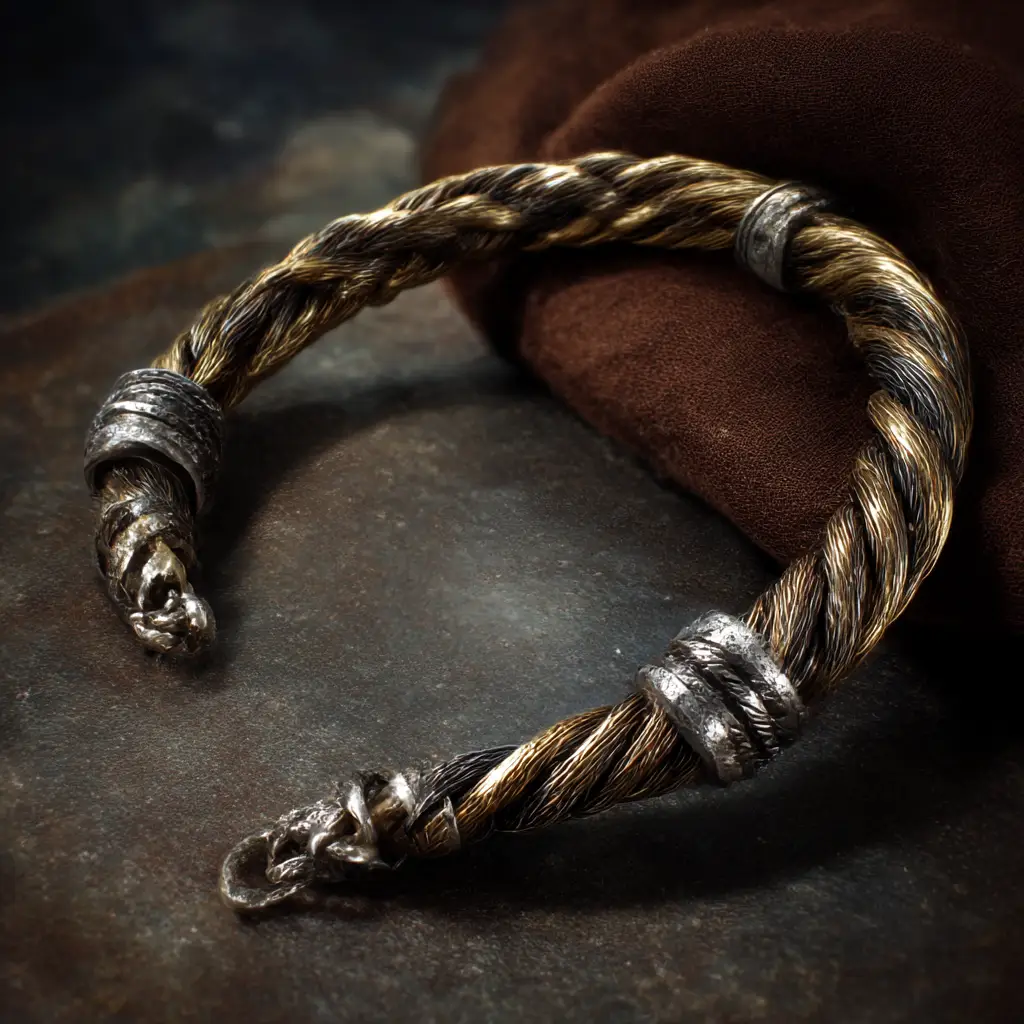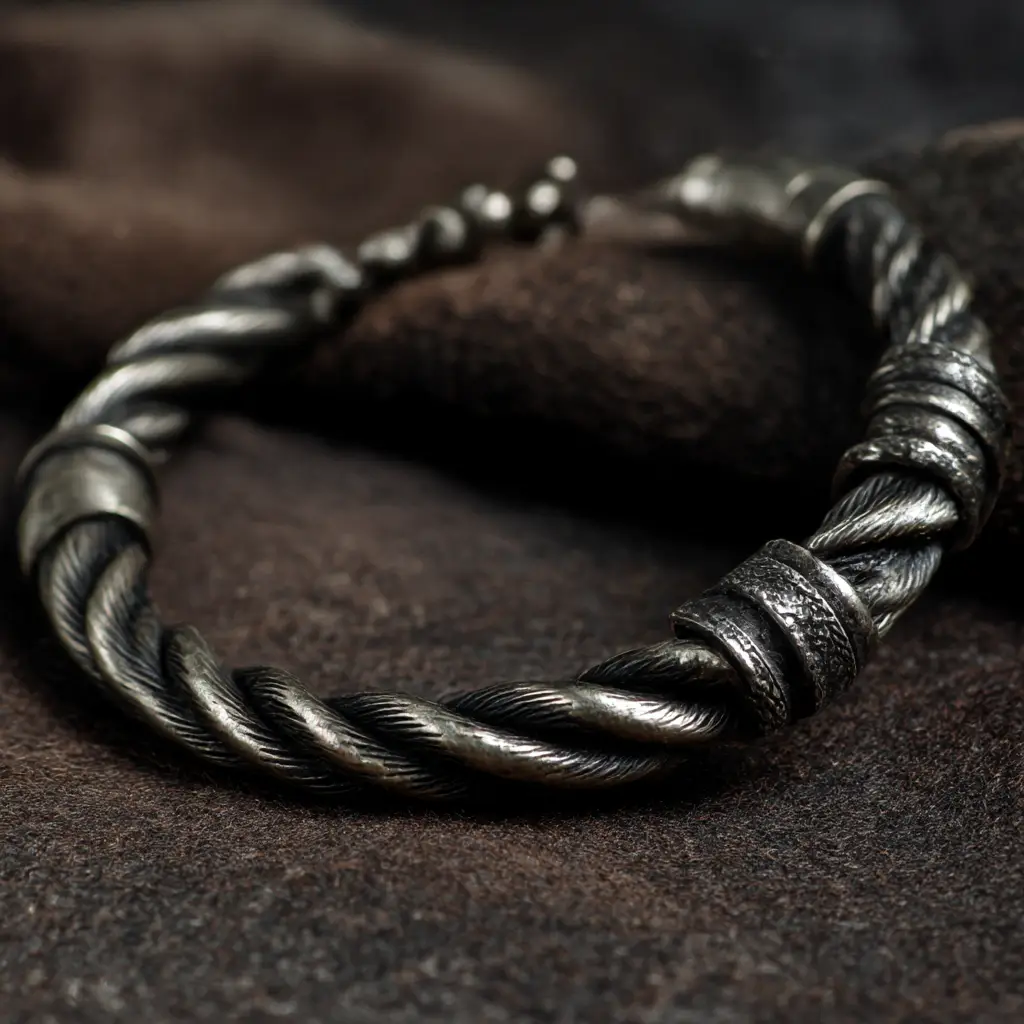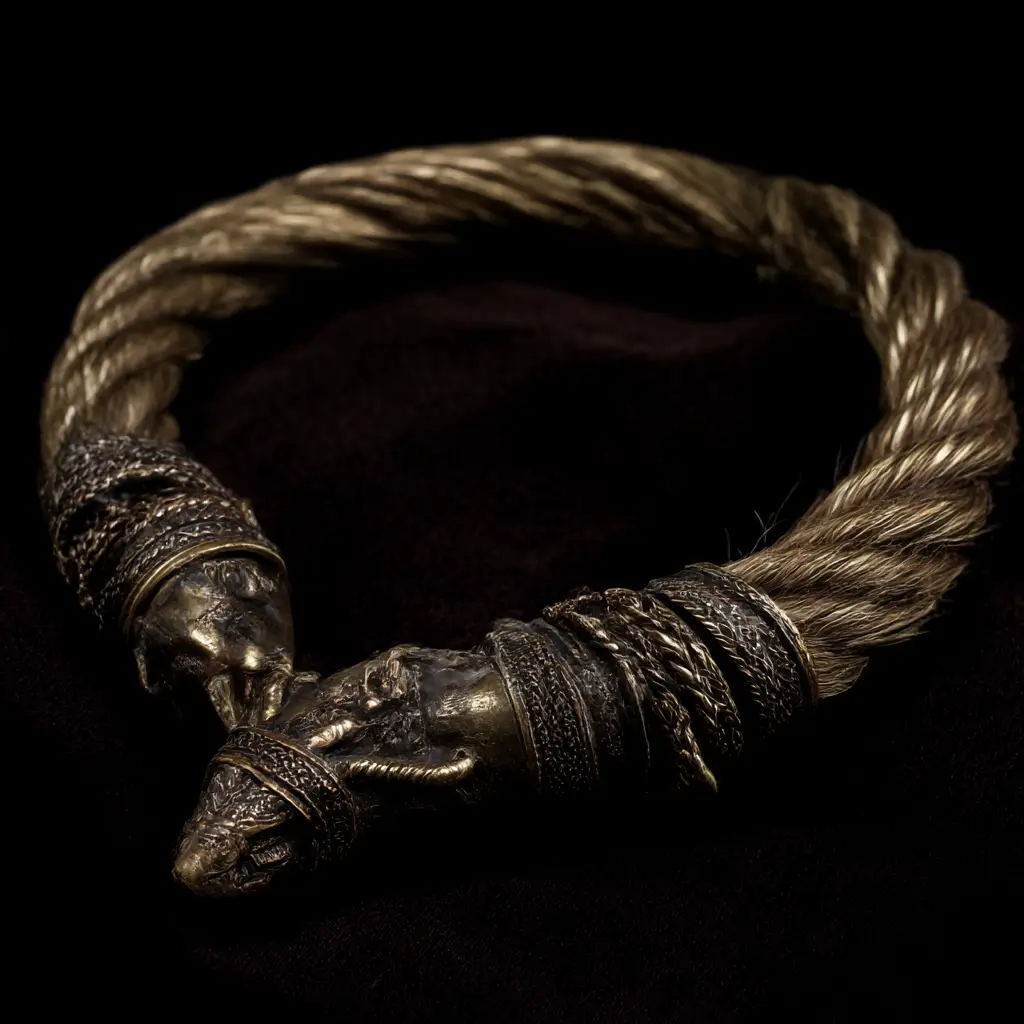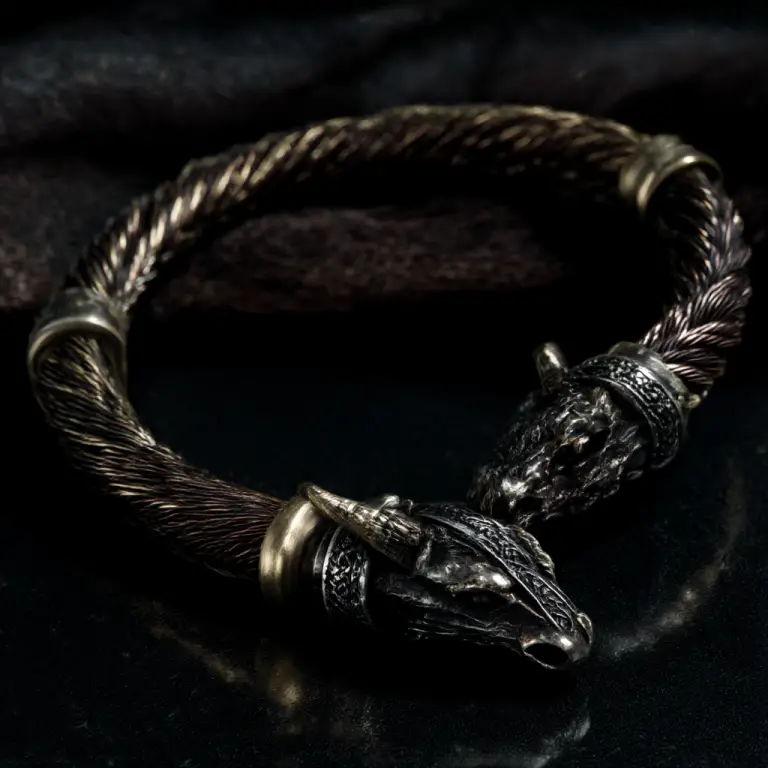Viking Torcs: Symbols of Status, Power, and Artistry
Viking torcs were striking neck ornaments that served as powerful symbols of status, wealth, and identity in the Viking Age, roughly between the 8th and 11th centuries. These rigid neck rings, typically made of precious metals, were worn by both men and women, though they were especially associated with chieftains, warriors, and individuals of high rank.
Design and Materials
Viking torcs were most often crafted from gold, silver, or bronze, sometimes decorated with intricate knotwork, animal heads, or geometric patterns. Many examples show a twisted or braided design, giving them both strength and visual impact.
Some of the most elaborate torcs featured terminals shaped as stylised animal heads — such as wolves, serpents, or dragons — reflecting the deep symbolic role animals played in Viking culture. Others were simpler, with clean lines and a focus on the beauty of the metalwork itself.
Symbolism and Function
For the Vikings, torcs were far more than decorative jewellery. They conveyed status, allegiance, and cultural identity. Wearing a torc signified a person’s wealth and importance, and in some cases, it marked loyalty to a specific leader or tribe.
Torcs were often given as gifts to loyal warriors or allies, making them both personal adornments and political tools. They also carried symbolic associations with strength, protection, and connection to the gods, particularly in the context of Norse mythology.
Craftsmanship and Techniques
Viking metalworkers were highly skilled, using techniques like twisting, hammering, casting, and engraving to create torcs of remarkable artistry. Silver was often gilded or inlaid with niello (a black metallic alloy), adding contrast and richness to the surface. Some torcs included beadwork or were combined with glass or semi-precious stones.
Archaeological finds have revealed torcs ranging from simple bronze bands to elaborate gold neck rings weighing several hundred grams — clear evidence of the range in social standing among their owners.
Archaeological Discoveries
Torcs have been uncovered in burial mounds, hoards, and settlements across Scandinavia and regions influenced by Viking expansion, such as the British Isles and parts of Eastern Europe. Some of the most famous examples come from sites in Denmark, Norway, and Sweden. These finds offer valuable insight into Viking society, trade networks, and artistic traditions.
Viking Torcs Today
Today, Viking torcs continue to inspire modern jewellery designers and historians alike. They are frequently recreated in contemporary metalwork, worn as expressions of cultural heritage or fascination with the Viking past. Museums across Europe house many of the finest surviving examples, making them accessible to the public and keeping the legacy of Viking craftsmanship alive.



